How to price t-shirts (get more sales & profit)

Wondering how much money you can make selling t-shirts?
That depends on two factors:
- Expenses
- Pricing strategies
These two factors will affect your earnings. Ideally, you want to make enough money to ensure a sustainable income and beat the competition.
So, if you’re a creator wanting to make your own merch, but confused about how to price your product, stay tuned.
So, in this article, I’m going to share a simple guide for pricing your t-shirts for retail:
No more confusion around how to price your t-shirts!
Step 1: Assess your expenses
How much should I charge for a t-shirt?
This question has probably crossed your mind while thinking about selling merch. The truth is that before you can add a t-shirt business profit margin and start selling, you need to assess expenses first. So, let’s go over them.
Production expenses
Expenses may vary depending on how you create and sell your t-shirts.
If you’re using Sellfy’s print-on-demand (POD) service, it’s very straightforward:
- The production cost (also known as self-cost or base price) is covered in the price you pay for each product.
- The shipping is handled by Sellfy and paid by the customer (including tax if applied; Sellfy has advanced VAT & Tax settings).
You also don’t need to make preorders, keep inventory, or pay upfront for the custom t-shirts you’re selling. You can find Sellfy’s t-shirt prices when adding products to your store (under Variants > COST). Note that the production cost will vary depending on the production facility location.
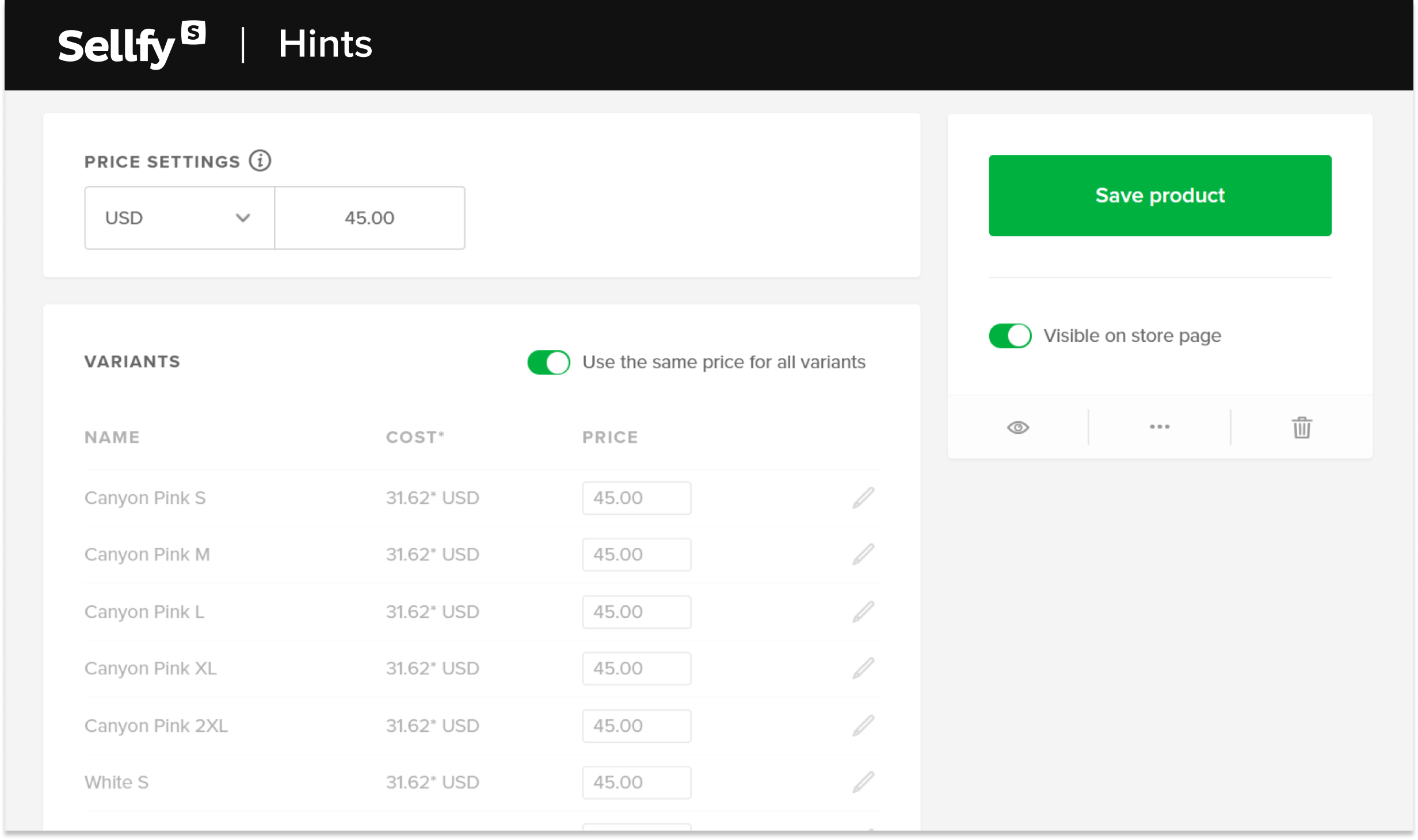
T-shirt design costs
If you’re an artist, your only expenses might be the tools or software that you will use. In that case, you can add your design expenses to the t-shirt price so that you’re covering the expenses or paying yourself for the time spent working.
However, if you’re not an artist, you will have to outsource design services.
If you’re a creator wanting to sell merch and you have an idea for a design, head over to our article on how to design custom t-shirts.
Here are two different formulas for determining your t-shirt design costs:
Design cost / number of designs = design cost per shirt
Design cost / your profit margin = number of minimum t-shirts to sell
Marketplace or platform fees
Marketplace or eCommerce platform fees are another expense to consider. For instance, Etsy will charge a hefty percentage of your sales, while major platforms like Shopify will charge a fixed price (the cheapest one is $29). Many of these platforms will also have hidden fees.
With Sellfy, you’ll have none of these issues as it’s very beginner-friendly—you can get your store up and running within 5 minutes without a hassle. You can also embed it on your own website.
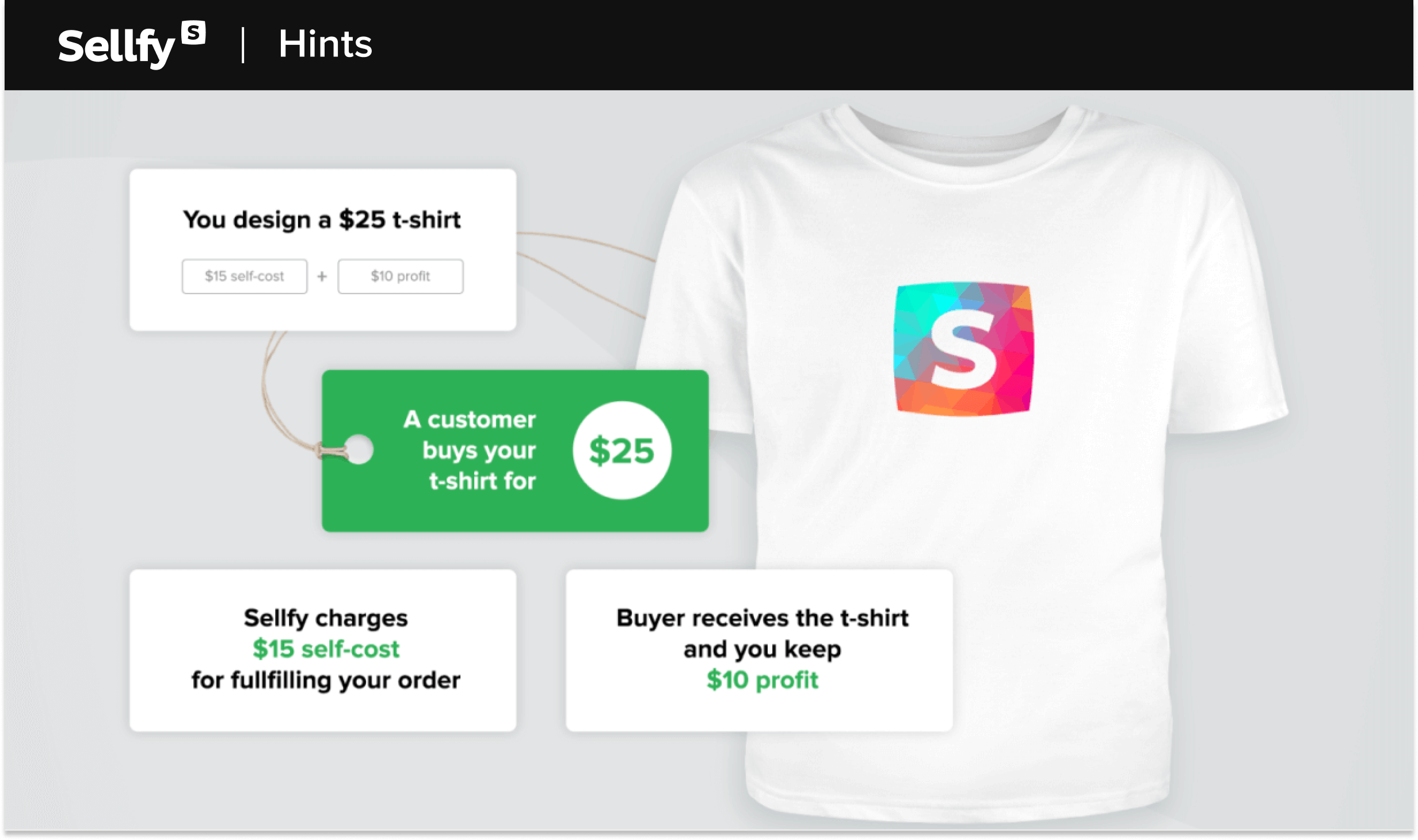
So, what is Sellfy?
Sellfy is an easy-to-use eCommerce solution for creators wanting to sell any type of products online: print-on-demand merch and digital or physical goods. Some of its best features include a white-label store, instant payouts, and unlimited products.
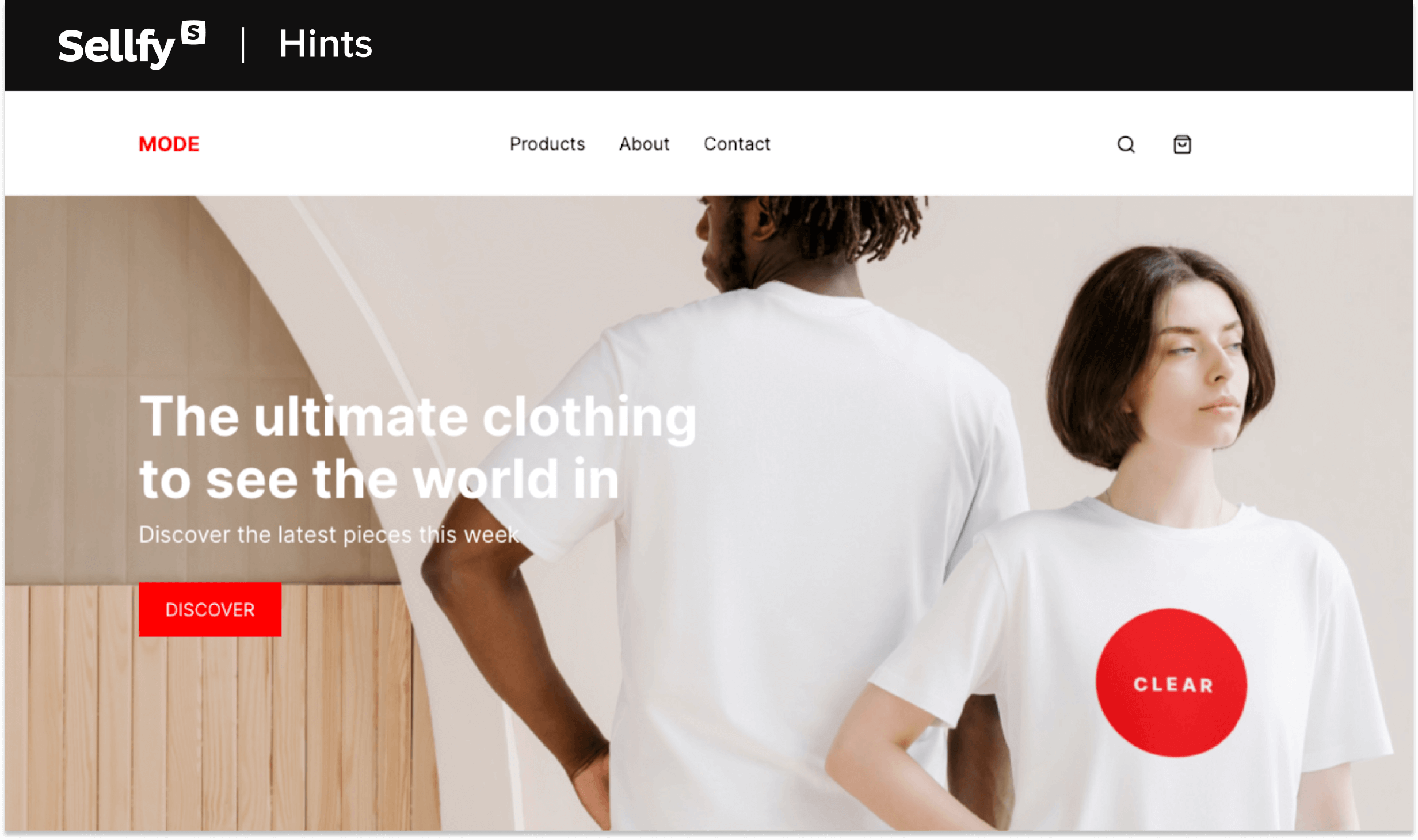
To open a Sellfy store and start selling quality t-shirts, follow the steps below:
- Choose a subscription plan or start a 14-day free trial (you can upgrade at any time to access more features).
- Once your email address has been verified, log in and go to the Products section to pick your custom products and upload designs.
- Customize your store to match your brand, add your logo, and you’re ready to start selling!
Step 2: Add a profit margin
Now that you’ve added up all the expenses, it’s time to finally answer the following question:
How much should a t-shirt cost?
To price your t-shirts for retail, use the following formula:
Production cost + profit margin (e.g. 20%) + expenses = retail price
Keep in mind that you can adjust your margin, but it shouldn’t be much higher than the price of your competitors (as it’ll be more challenging to make a sale). If you’re still not sure how to come up with a profit margin, keep on reading for more tips and strategies.
How to price t-shirts
The best way to decide on your retail price is to make sure that it falls more or less within the average t-shirt price. However, don’t be afraid to price your t-shirts for what they’re worth.
Consider the following pricing tips:
- Most creators go for a 20% profit margin while retailers go for 50%.
- Check the prices in your niche to find the average t-shirt price.
- The recommended retail price ranges from $24.99 to $30.99 per shirt (some successful sellers set their prices at $3-5 above the typical range).
- Evaluate your target audience (the younger the audience, the lower your prices should be).
- Stick to a one-sided print with 1-3 colors in your brand design to keep a reasonable retail price.
- Overcharging your prices can backfire and minimize sales.
- The more samples you order in bulk, the cheaper it’ll be.
- People love purchasing products with free shipping.
Pro tip: End your t-shirt prices with .99 instead of .00 (e.g. $30.99 instead of $31). This is a well-known psychological trick used by retailers since time immemorial. .99 makes the price seem cheaper, even though it’s a difference of only one cent.
With those tips in mind, let’s move on to actionable strategies.
Market-oriented pricing
With this type of pricing, your custom t-shirt will be neither cheaper nor costlier than the average t-shirt price. It’s a relatively safe choice for targeting a large audience that buys at the average market value, but also tough because it’ll set you up against other sellers.
Above or below the market average pricing
- Increase your t-shirt value (but keep the average price) to set it above the average. For example, you can add a bonus gift, free stuff, or any other cool offer. This will make your t-shirt seem much more enticing.
- Decrease your t-shirt price (but keep the quality) to set it below the average. The average t-shirt price is usually around $24.99. So, if you decrease it to $23.99 per shirt, you might just gain more customers.
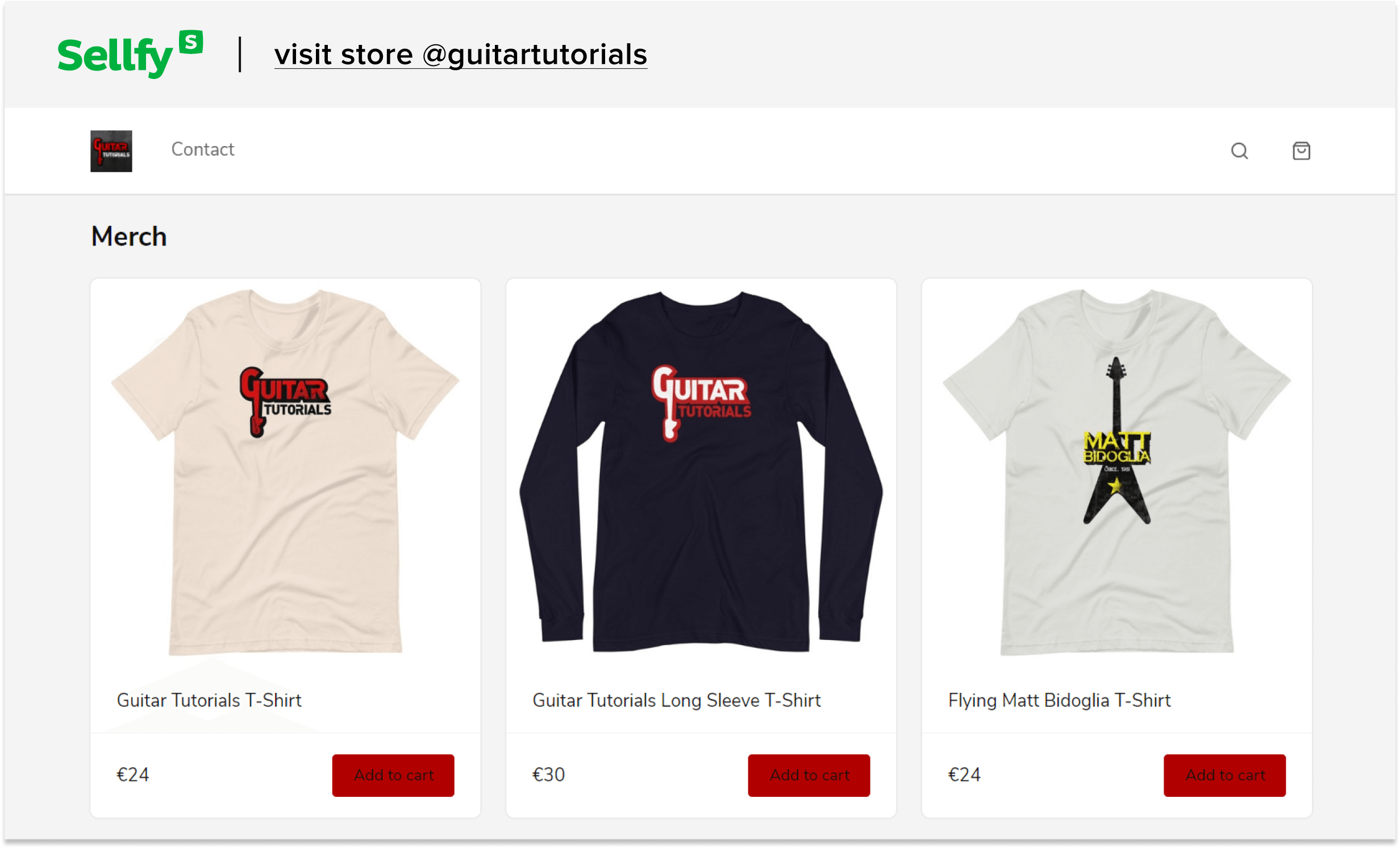
Discount pricing
With this strategy, you set a higher price for your t-shirt than the average price, and then do occasional sales or special deals. You could use this method during the holiday season when people are more likely to shop on the internet.
Pro tip: Those who have made it big in the merch business all say the same thing—make it expensive. You see, expensive is a relative term. If someone really wants your t-shirt, they’re willing to purchase it regardless of the price. When something costs more, it is perceived to be of much higher value. The image below illustrates this point.
Higher priced t-shirts translate into higher-value customers and therefore more money. These customers may become endorsers, advocates, and advertisers of your brand.
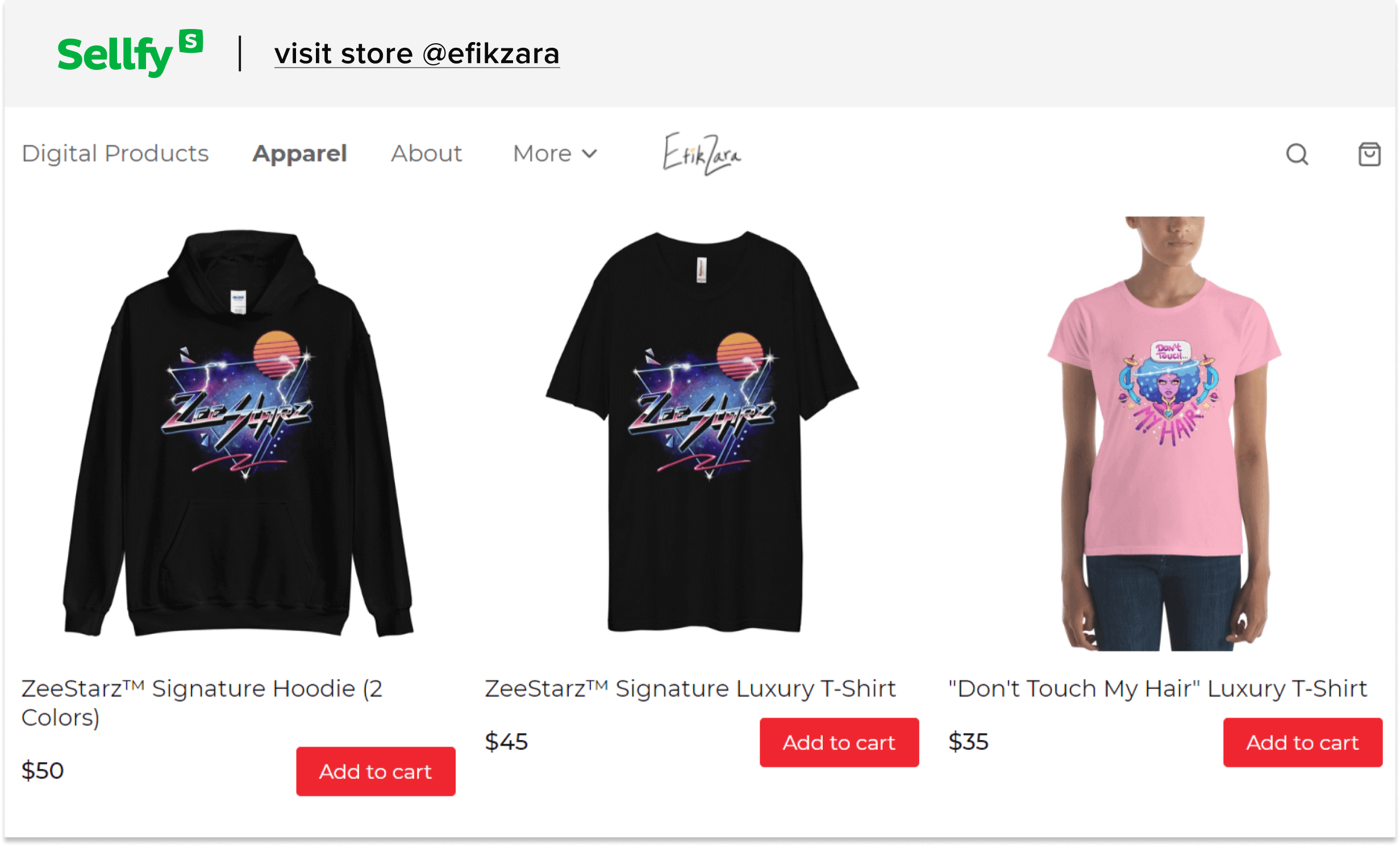
Penetration pricing
This is a common strategy with creators that grow big over time. You start out with below-average pricing and then gradually raise your prices as you gain more customers. So, if you’re not willing to charge higher prices yet, you could give this a try.
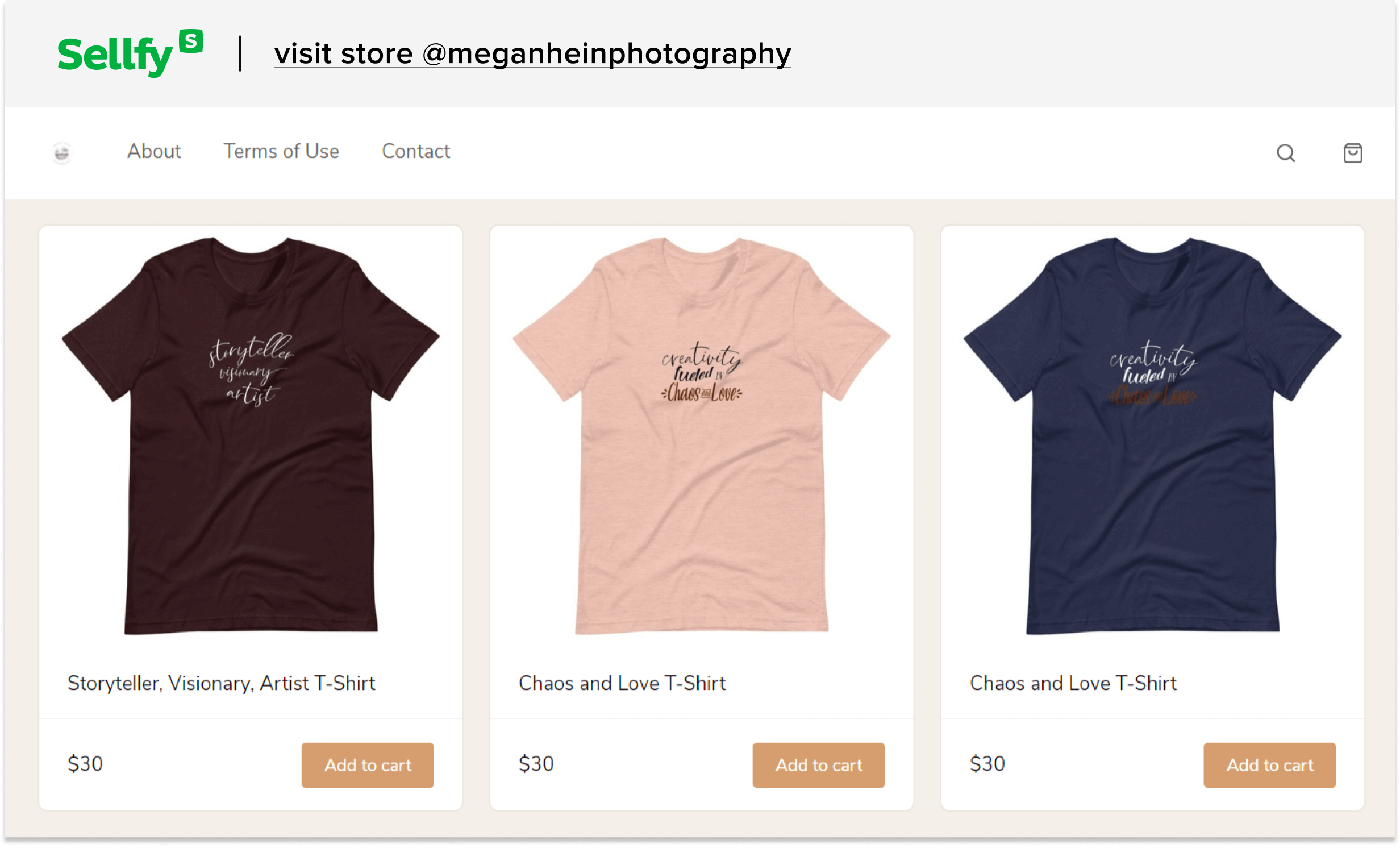
Bundle pricing
This is another strategy that is highly attractive to the customer. It’s essentially a bundle product that consists of several t-shirts or apparel products sold for a slightly cheaper price than a single product. The more, the merrier, right? This is why selling product bundles often increase revenue.
Over to you
To evaluate which strategy you should get started with, I suggest doing research: google apparel businesses in your niche and check their social media pages or websites. It’ll help you figure out how to price your t-shirts. Once you’ve settled on a strategy, it’s time to start selling online! If you’re using Sellfy, remember that you can use our in-built marketing tools to create campaigns, promote your t-shirts and grow your merch business.
FAQ: pricing t-shirts
Is it profitable to sell t-shirts?
Yes, selling t-shirts online can be very profitable if done correctly. With the rise of eCommerce platforms and print-on-demand services, it has become easier and more affordable to start an online t-shirt business.
However, the competition is fierce, so it is important to have a unique and appealing design as well as effective marketing strategies. Building a strong brand and engaging with customers through social media can also increase profitability.
Overall, selling t-shirts online can be a profitable venture with the right approach.
What is the average t-shirt price?
The average cost of a t-shirt can vary depending on the brand, quality, material, and design. However, a basic t-shirt can cost anywhere from $10 to $30. For designer or premium t-shirts, the cost can range from $50 to $200 or more.
Additionally, customized t-shirts or those with unique designs may have a higher price tag. Ultimately, the cost of a t-shirt depends on personal preference and budget.
How much does a shirt cost to make?
Sellfy’s print-on-demand service allows creators to design their own apparel and sell it online without the hassle of keeping inventory or shipping items themselves. The cost of making a shirt through Sellfy’s print on demand service varies depending on the type of shirt, printing method, and quantity ordered.
However, creators can easily set their own prices and profit margins to ensure they make a profit on each sale. With Sellfy’s print-on-demand service, creators can focus on designing and marketing their products while leaving the manufacturing and fulfillment to the experts.






